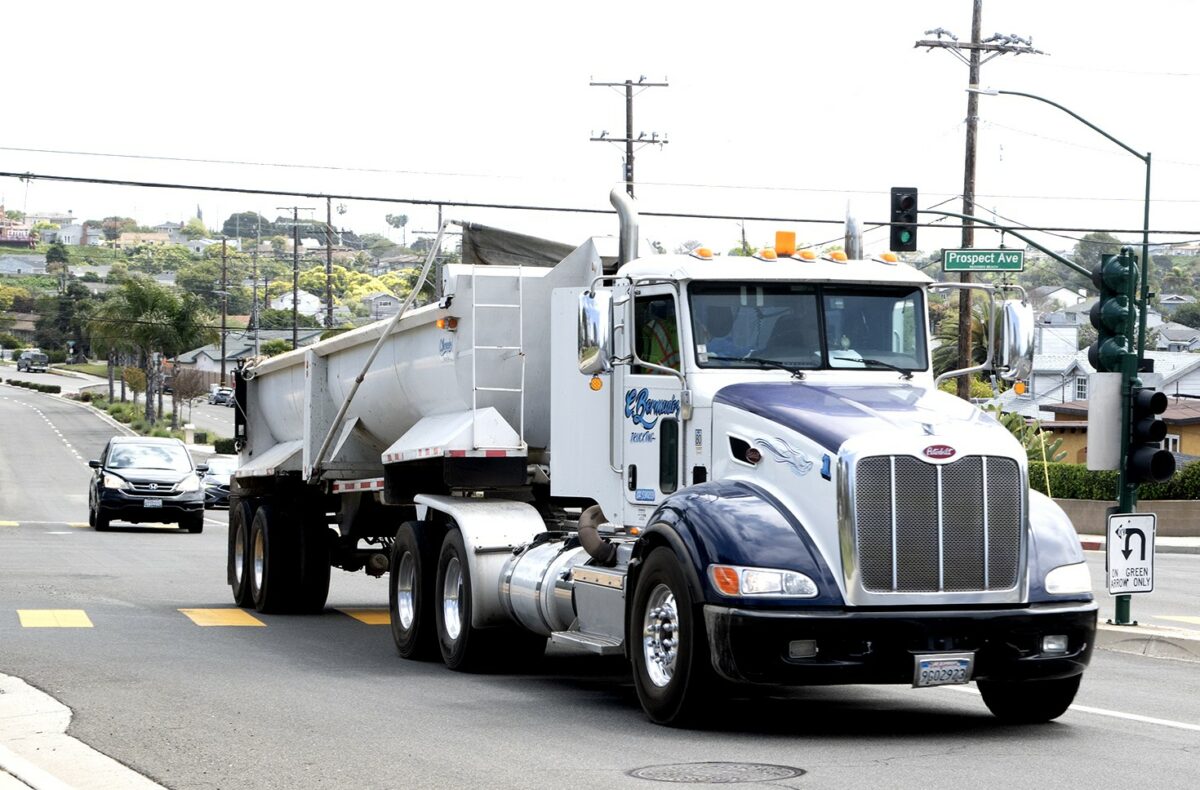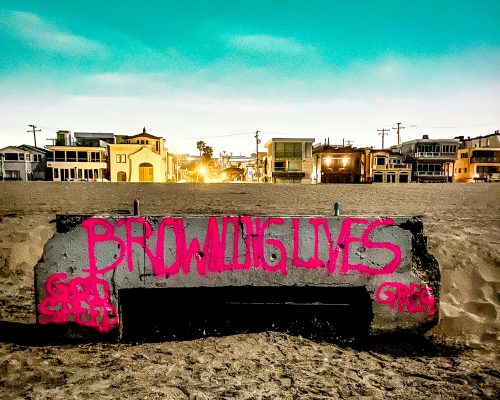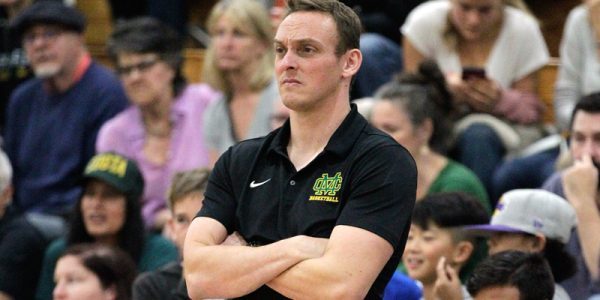by Garth Meyer
When a semi-truck on its way down either of three boulevards in Torrance crosses into Redondo Beach, it’s suddenly on an illegal truck route.
A sign may or may not designate it as such.
This is the crux of an issue facing the two cities as Redondo Beach looks to reduce large truck traffic – weighing more than three tons – on its residential streets, particularly Del Amo, Sepulveda, and Palos Verdes boulevards.
In March, Redondo Beach resident John Perchulyn did a four-day study, with neighbor Tony Magana, counting 122 large trucks per day that pass through the intersection of Prospect Avenue on Palos Verdes Boulevard, on average.
The sign on the lightpole says no trucks over three tons are permitted.
“What’s going to happen, I’m afraid, is the city will designate Palos Verdes Boulevard a truck route because of Torrance’s lack of cooperating with Redondo,” Perchulyn said. “There’s no reason any tractor-trailers should be on these streets. This is residential all the way.”
On March 25, the Redondo Beach Public Works & Sustainability Commission fielded the issue at a regular meeting, the officers voting 6-0 for city staff to put up more signs, and work something out with Torrance.
The matter was brought forth by concerns from residents and city councilmembers.
“The goal is to create an enforceable and workable plan,” said Andy Winje, new Redondo Beach Public Works director, to the Public Works & Sustainability Commission. “We don’t have a designated truck route for these (drivers). Introduction of (Redondo) truck routes could send them in the direction we do want them to go, and keep them off residential streets and smaller streets.”
Representatives from the city’s Public Works department met last year with their Torrance counterparts about the issue. No agreement for any changes was reached.
In both cities, trucks of all sizes are allowed on residential streets, if their destination is on that street.
Officer Doug Westphal, a Redondo Beach motorcycle policeman, gave input from the law enforcement perspective at the March 25 meeting.
He is certified in truck laws from a 40-hour training session given by the California Highway Patrol.
“They’re not teaching you the rules necessarily, they are teaching out about the exceptions to those rules,” Westphal said, noting there are many.
He is the only RBPD officer who has gone through this training. He talked about signage.
“That’s the biggest issue we have on Palos Verdes Boulevard,” he said.
“The signage could be better, but we would need cooperation (from Torrance),” said RBPD Chief Joe Hoffman, referring to the possibility of signs put up in Torrance warning drivers of what is ahead. “I believe well-marked truck routes would gain compliance. The average truck driver wants to follow the rules.”
For Westphal, pulling a large truck over and citing it could involve an hour-and-a-half stop and a heavy-duty tow truck.
“What would I stop? What would I be able to prove to a judge…?” Westphal said of his choices during patrol.
A potential option before the city – which would need to be decided by the city council – is to add to Redondo’s truck routes.
Winje and Ryan Liu, traffic engineer, presented this to the Public Works & Sustainability Commission.
“We provided a technical solution to close the loop,” Liu said.
The idea would make Prospect Avenue a truck route, so drivers could take it from Del Amo Boulevard to Torrance Boulevard – a legal truck route in both Redondo and Torrance – to enter Redondo Beach from there. Prospect Avenue as a truck route would also link Sepulveda/Camino Real to Torrance Boulevard. Finally, Palos Verdes Boulevard would be made a truck route.
“None of these options were popular,” Liu said, referring to the Commission’s vote for an attempt to find another solution.
Craig Funabashi, Commission chair, asked if putting up signs in Torrance is the answer, akin to what Chief Hoffman said.
“We’ve asked for permission and received no response,” Winje said.
Funabashi also asked if these commercial drivers have the legal maps for Redondo Beach.
Officer Westphal said box truck drivers usually do not know what the legal routes are, while drivers of larger trucks have pre-set routes and are more likely to know.
As far as weight, many tow trucks are heavier than 6,000 pounds, the same for even small contractor trucks.
“Possibly the best case scenario is to get Torrance to remove these truck routes up to Anza Street,” Liu said. “(Otherwise) it’s difficult to enforce all of this because (truck drivers) have nowhere else to go.”
Any further action on the matter would likely take an agreement between the two cities.
“We’re going to need to reach out to Torrance,” said Todd Loewenstein, Redondo city councilman for District Two. “I think the best way is for our staff to (contact) their staff (again). Public Works or city manager.”
Is this doable?
“I don’t know how Torrance is going to react to this,” Loewenstein said.
In Public comment at the March 25 Commission meeting, resident Perchulyn made a suggestion.
“Truck drivers should have a map of our routes,” he said, suggesting police officers could give them one.
Chief Hoffman told the Easy Reader this week he was not opposed to doing this in the future.
Joy Abaquin-Ford, Redondo Beach quality of life prosecutor, weighed in on behalf of the city attorney’s office.
“I agree, Torrance has created a problem; for our residents, our students, our children,” she said. “That is the focus of this issue (but) we don’t have a legal recourse against them.”
The March 25 discussion concluded with a motion from Commissioner Candace Nafissi, gaining a second before the unanimous vote to request the city council/city manager to “reach out” to Torrance and collaborate, as well as for city staff to put up more signs.
“Torrance Boulevard needs to be the truck route into our city,” Funabashi said. “ … Let’s focus on diplomacy between the two cities… Torrance dead-end truck routes, that’s the problem.”
“190th is another street that makes sense,” Councilman Loewenstein said.
Traffic Engineer Liu explained that Redondo Public Works could add two to three more signs, maximum, due to state laws about signs’ placement.
He reiterated that, even with more signs, the problem remains that a trucker on a legal route in Torrance sees a sign just as they enter Redondo Beach with no place to turn around or avoid continuing.
“We’re trying to be judicious with the resources we have,” Liu said.
The truck routes’ matter is expected to go before the Redondo city council later this spring or early summer, when councilmembers would give any further direction to staff.
Efforts to reach Torrance representatives for comment in this article were unsuccessful. ER
—————————-
Letter eschewed in favor of other communication
Leading up to a March 25 meeting of the city’s Public Works & Sustainability Commission, which included truck routes on its agenda, city staff prepared a letter to go out to 1,500 nearby residents.
“The letter never went out,” said resident John Perchulyn.
Plans changed before the meeting.
“There’s simply not enough staff time to send 1,500 letters out,” said Ryan Liu, traffic engineer, explaining that the information was instead conveyed through District One and Two city councilmembers’ social media and three traffic readerboards.
——————————








